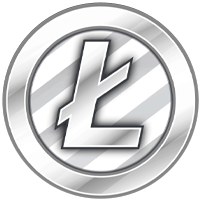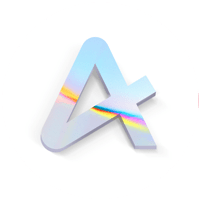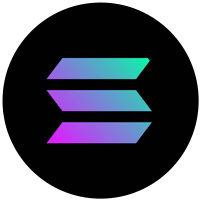menu
Why Hardware Wallets and Validator Rewards Matter in Solana’s Ecosystem
Whoa! Ever notice how folks diving into Solana sometimes overlook the nuts and bolts beneath the flashy NFTs and DeFi hype? Yeah, me too. Something felt off about just relying on hot wallets or exchanges to hold crypto, especially when you’re staking or chasing validator rewards. It’s like leaving your car keys in a neon-lit parking lot without a second thought.
So, I started poking around hardware wallets that play nice with Solana. Turns out, these aren’t just bulky USB sticks anymore—they’re evolving with the ecosystem, making it easier and safer to manage assets while reaping staking rewards. But here’s the kicker: not all hardware wallets fully support Solana’s unique features, especially when it comes to interacting with validators or handling NFTs seamlessly.
Initially, I thought “Hey, a hardware wallet is just a cooler way to store coins.” Actually, wait—let me rephrase that. It’s more about trust and control. When you stake your SOL tokens, you basically delegate your voting power to validators, earning rewards over time. And if your keys are floating in some hot wallet, you risk losing everything to hacks or phishing.
On one hand, software wallets like the solflare wallet offer great UX and staking options. Though actually, the question is: can they match the security hardware wallets provide? The answer isn’t black and white. It depends on how deep you want to dive into security versus convenience.
Here’s the thing. The Solana network’s speed and low fees are amazing, but they also demand your wallet isn’t a weak link. Validator rewards are only valuable if you can claim them safely and consistently. And hardware wallets, by isolating your private keys offline, offer a shield against many attack vectors. Still, the ecosystem’s complexity means some hardware wallets lag on full Solana support, especially for NFT interactions.
Check this out—

That moment when you realize your hardware wallet isn’t just a safe deposit box but a gateway to actively participate in Solana’s staking economy. It’s not just about holding SOL; it’s about engaging with the network securely.
Validator Rewards: The Underappreciated Engine
Okay, so validator rewards might sound dry, but they’re crucial. Validators keep Solana running smooth. When you stake, you’re essentially voting for validators you trust. In return, you earn rewards proportional to your stake. Sounds simple, right? But the devil’s in the details.
I’ll be honest, this part bugs me. Some wallets hide or complicate the rewards claiming process. You might think your staking is passive, but unclaimed rewards can pile up, losing value over time if you’re not careful. Plus, when hardware wallets come into play, signing transactions to claim rewards needs to be seamless.
My gut said that only power users cared about these nuances. But nah, even casual holders should get this. If you’re into NFTs on Solana, your wallet has to juggle multiple transaction types—staking, claiming rewards, buying, selling NFTs—all while keeping your keys offline.
That’s why the solflare wallet caught my eye. It bridges software convenience with hardware security, supporting staking and NFT management without turning you into a cryptographer.
Still, I’m not 100% sure it’s flawless. Network upgrades and validator changes can throw curveballs. Sometimes I wonder if the staking UX could be friendlier. But hey, that’s the nature of a fast-moving ecosystem.
Hardware Wallets: Not Just a Luxury but a Necessity?
Seriously? Yep. With crypto hacks becoming more common, having your private keys on a device disconnected from the internet is a game changer. But here’s where it gets tricky. Solana’s ecosystem is unique—fast transactions, frequent interactions, and a growing NFT space. Hardware wallets must keep up without slowing you down.
Some hardware wallets support Solana staking but lack NFT integration, making users juggle multiple wallets or apps. Others have clunky interfaces that scare newcomers away. And that’s a problem because if the security layer is too hard to use, people just revert to less secure methods.
So what’s the sweet spot? For me, it’s wallets that combine solid hardware security with smooth Solana features—staking, validator rewards, NFT support—without a steep learning curve. The solflare wallet fits that bill pretty well, acting as a bridge between advanced blockchain features and accessible design.
Oh, and by the way, I’ve noticed that many users underestimate the importance of firmware updates on hardware wallets. Skipping these can expose you to vulnerabilities, kinda like neglecting car maintenance just because you’re busy. The crypto space moves fast; your hardware wallet needs to keep pace.
In my experience, this ecosystem is still maturing. Hardware wallets are catching up, but there’s a lot of room for improvement in user education and multi-feature support. For example, I’ve seen users confused about how validator rewards compound or how staking cooldowns work. These aren’t wallet flaws per se, but the wallet UX could do a better job explaining them.
Final Thoughts: Taking Control Without Losing Your Mind
So here’s the deal. If you’re serious about Solana—staking, collecting NFTs, or just holding SOL—you owe it to yourself to consider hardware wallet security. Not just for safety, but for peace of mind when engaging with the network’s features like claiming validator rewards.
I’m biased, but pairing a user-friendly interface like the solflare wallet with a solid hardware device strikes a good balance. You get control without feeling overwhelmed.
Yeah, it’s not perfect. There’s a learning curve and some quirks. But that’s part of the crypto charm, right? The ecosystem’s evolving, and wallets need to evolve too. Meanwhile, don’t sleep on how important it is to control your private keys offline—especially if you want to fully participate in Solana’s staking rewards and NFT world.
Hmm… I guess the takeaway is this: security and usability don’t have to be at odds. With the right tools and a bit of patience, you can enjoy Solana’s benefits without constantly looking over your shoulder.






















